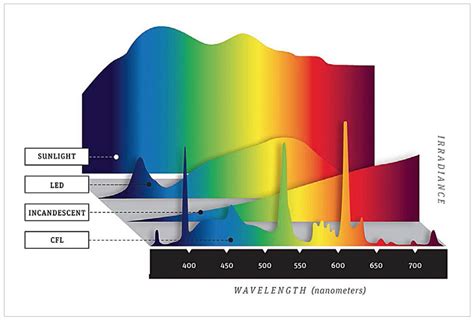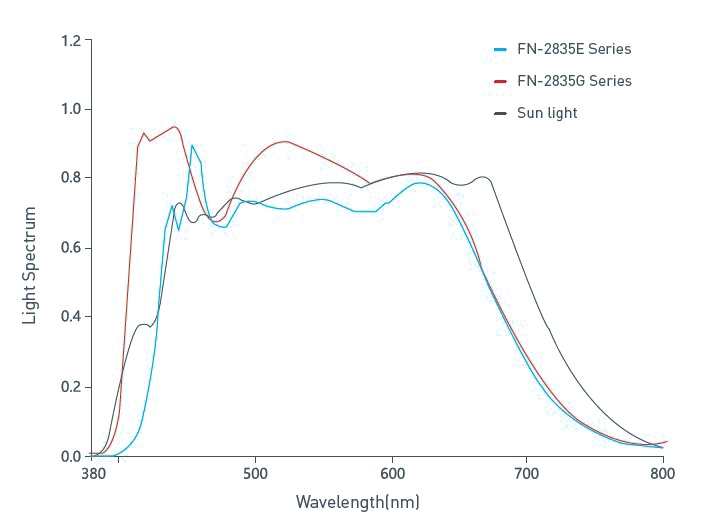

Why do we need full-spectrum light? As humans, we are used to seeing things in sunlight. This has a huge impact on the way we perceive things around us. Our reference for color and vibration is based on what we see every day in the light of that big ball of fire in the sky.
When we want to present our products, we do well to approximate that experience as closely as possible. Of course, the sun doesn’t shine indoors in our showroom, museum, or art gallery. That’s where full-spectrum light shows its potential.
A full spectrum lamp, also known as “daylight” lighting, has a very high color temperature, much like you see on a bright sunny day. It ranges from 5000K to 6000K and covers the electromagnetic spectrum from infrared to near-ultraviolet.
Due to their versatility and energy efficiency, LED lamps rapidly became the standard lighting technology in many applications, and have become the only option in many areas. Older versions of these lamps were considered too harsh for indoor use, but the latest variants transcend that judgment. Full-spectrum light emulates and approximates natural light.


Full-spectrum light has a high correlated color temperature (CCT) of 5000K – 6000K. Lights with higher CCT values produce greater brightness perception than lower CCT lights of the same luminance.
Full-spectrum light possesses high color rendering properties, which causes surface colors to appear more saturated.
Not every lamp reproduces color in the same way. The Color Rendering Index (CRI) measures how colors relate under a lamp versus under the sun. Full-spectrum lights provide natural and attractive-looking colors due to their high CRI rating.
This makes Full-spectrum lights an ideal choice when light and color are important. Examples of these may include retail display lighting, store lighting, museums, or art galleries where accurate color rendering is essential. Lighting with a high CRI is equally valuable for use in buildings, as it can transform a room by highlighting design details and creating a comfortable, natural overall atmosphere.
In short, full-spectrum light can be thought of as simulated sunlight (which at noon has a natural color temperature of about 5,500K and a CRI of about 100). Because under these conditions the lighting resembles what our eyes are used to, full-spectrum light is an ideal choice when the appearance needs to be as good as possible.


Discover Vivalyte full spectrum lights that cover the visible light region of 380-780nm with good spectral continuity. They also reduce the damage of blue beam overflows (Rf>97, Rg>100, CRI 95+).